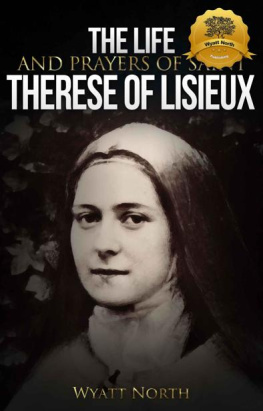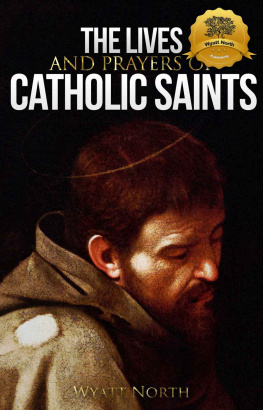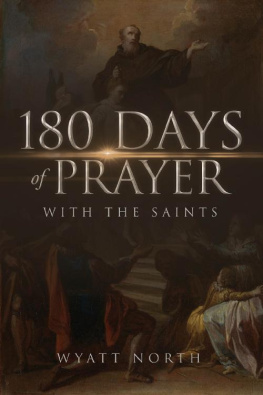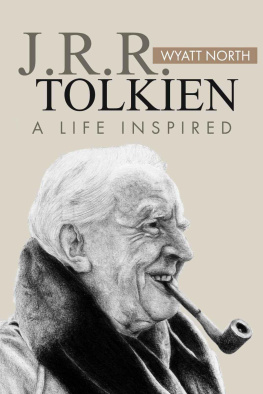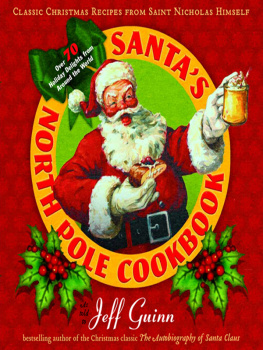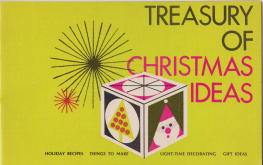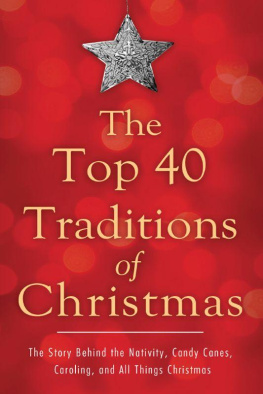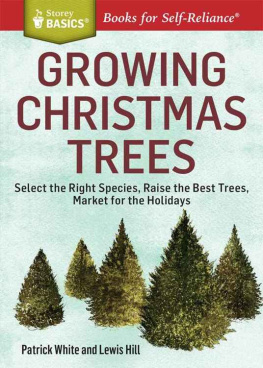The History of Christmas
Wyatt North
Wyatt North Publishing

Wyatt North Publishing, LLC 2012
A Boutique Publishing Company
Publishing by Wyatt North Publishing, LLC.
Copyright Wyatt North Publishing, LLC. All rights reserved, including the right to reproduce this book or portions thereof in any form whatsoever. For more information please visit http://www.WyattNorth.com .
Cover design by Wyatt North Publishing, LLC. Copyright Wyatt North Publishing, LLC. All rights reserved.
Scripture texts in this work are taken from the New American Bible, revised edition 2010, 1991, 1986, 1970 Confraternity of Christian Doctrine, Washington, D.C. and are used by permission of the copyright owner. All Rights Reserved. No part of the New American Bible may be reproduced in any form without permission in writing from the copyright owner.
ISBN: 978-1-62278-131-7
About Wyatt North Publishing
Wyatt North Publishing is a boutique publishing company. We always provide high quality, perfectly formatted, eBooks. All of our eBooks include a Touch-or-Click Table of Contents, allowing easy and instant access to each section.
We guarantee our eBooks. If you are not 100% satisfied we will do everything in our power to make you happy. Visit .
Click here for free eBook offers!
Foreword
Almost everyone, no matter their religious affiliations, will have his/her brush with variously shaped and delivered Christmas/Holiday and New Year greeting cards, Luke 2, gift giving from surfeit to simple, the Salvation Army bell, crches, travel delays, Jingle Bells, stockings, tinsel, wrapping paper, wreaths, weight gain, catalogs, evergreen scent, Handels Messiah, lit-up roofs and yards, fir trees, fake trees, plastic Santas, mall Santas, cookies and candy, and the list goes on and on.
Whatever the word evokes for you, you may never have given thoughtnot for a long time anywayto the beginnings, the customs, and the legends, and wonder, how did it come to this?
This book addresses the Christian origins of Christmas, its dating, its establishment as a feast of the Church, its popularization, and the origins of popular customs in America. Not the least, it offers an invitation to Catholics to rekindle devotion to the Christ in Christmas with sincere intention and faithfulness.
This edition has a linked Table of Contents and has been wonderfully formatted (searchable and interlinked) to work on your eBook reader.
You can purchase additional religious works directly from Wyatt North Publishing.
Enjoy.
Touch-or-Click Table of Contents
Century Bishop Became a Global Commercial Icon
Introduction
When we were children we were grateful to those who filled our stockings at Christmas time. Why are we not grateful to God for filling our stockings with legs?
Gilbert K. Chesterton
Not recognized as a feast of the church until the 4 th century, and not well established as a secular phenomenon in America until the mid-eighteen hundreds, Christmas the word not used until the eleventh centuryevokes feelings, images, memories, sentiments, expectations, and even moods.
Whether it is a holy day or a holiday, celebrated as a religious feast or as non-religious revelry, there is nothing neutral about Christmas. Here we are speaking primarily of American customs, where the secular season kicks off around the end of October. As Advent, Christmas, and Epiphany, the religious liturgical season spans over five weeks.
In 1999 the Supreme Court ruled that Christmas as a federal holiday (established as such in 1870) did not betray the separation of Church and State, a strident symbol of the fusion of profane and sacred expressions of the holiday/holy day.
Almost everyone, no matter their religious affiliations, will have his/her brush with variously shaped and delivered Christmas/Holiday and New Year greeting cards, Luke 2, gift giving from surfeit to simple, the Salvation Army bell, crches, travel delays, Jingle Bells, stockings, tinsel, wrapping paper, wreaths, weight gain, catalogs, evergreen scent, Handels Messiah, lit-up roofs and yards, fir trees, fake trees, plastic Santas, mall Santas, cookies and candy, Black Friday, crying babies, cranky postal workers, reindeer, snowmen, weird family members, good deeds, Silent Night sung to candle light at midnight, and. The season seldom comes and goes without failed expectations, grief, loneliness, stress, relapse, poverty, suffering, joy, peace, fulfillment, awe, love, and hope.
Whatever the word evokes for you, you may never have given thoughtnot for a long time anywayto the beginnings, the customs, and the legends, and wonder, how did it come to this?
This book addresses the Christian origins of Christmas, its dating, its establishment as a feast of the Church, its popularization, and the origins of popular customs in America. Not the least, it offers an invitation to Catholics to rekindle devotion to the Christ in Christmas with sincere intention and faithfulness.
The Cradle of Christianity
If you lived in first century Judea, and heard an eyewitness account of the deeds performed during the brief life of Jesus of Nazareth, you would have heard some rendition of the events that took place surrounding his ministry, his death, and resurrection. You might not have heard so much about his birth or his boyhood. Like other earliest witnesses, you would have been told the Lord was coming again soon in a cataclysmic event to end history; no need to concern oneself with biographical details, or to write anything down. For now, just wait.
If you were a second century Christian you would know, as several generations before you came to know, that Jesus return was not imminent; history was marching on in quotidian rhythms like always. Therefore, believers realized Gods story from Adam and Eve to Jesus, to the culmination of the ages must be written and bound for the benefit of generations to come. Up until the fourth century Jews and Christians would struggle to decide which books would be included in the canon of Scripture, the redemption story---from Gods creation in the beginning, to the law and the prophets, to the incarnation of God in Jesus, to the sending of the Holy Spirit and the founding of the Church, and finally, to the culmination of history upon the Lords return.
The twenty-seven books of our New Testament actually have little to say of Jesus biography, never mind his birth, yet, the Bibles story of Jesus of Nazareth, his birth, life, death, and resurrection, would become the primary source for instruction, guidance, and inspiration. Many other gospels were written and circulated in the ancient church, and many are extant. Called the New Testament Apocrypha , they are well worth reading, particularly the Protogospel of James to which some have referred as the prequel to the birth narratives. That gospel will be referenced further on. The Apocryphal gospels reflect early Christians curiosity about the stories that were given short shrift in the four gospels of the canon, particularly the details surrounding Jesus birth.
Their stories and legends were an attempt to add detail and intrigue to parts of Jesus birth and boyhood; they would partially influence the biblical birth narratives. Even though interest in Jesus birth was not paramount for the gospels of the Bible, four chapters in Mathew and Lukes gospels recount what every day Christians refer to as The Christmas Story.
Those magical, mysterious and wondrous stories are told in Mathew 1:1-25 and Luke 1:5-2:52 and are here to stay. To the birth narratives we now turn.
The Birth Narratives of Matthew (1:1-25) and Luke (1:5-2:52)
Next page


